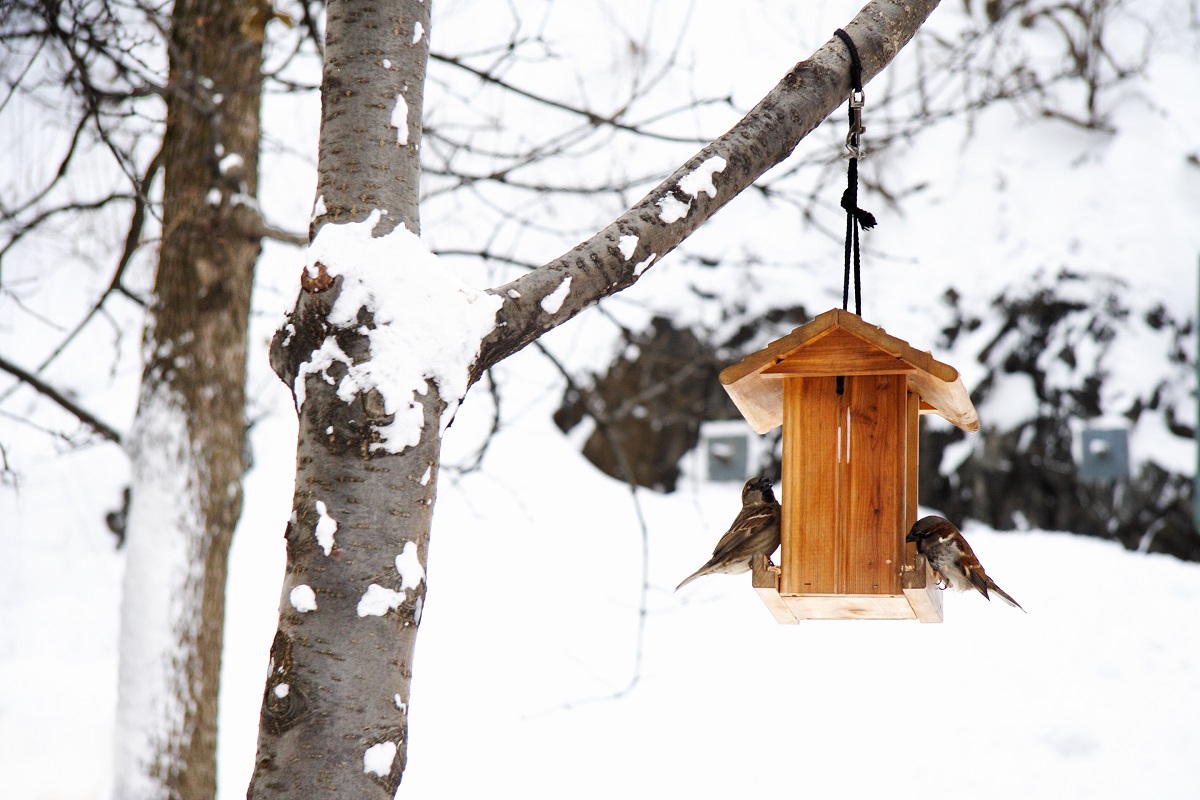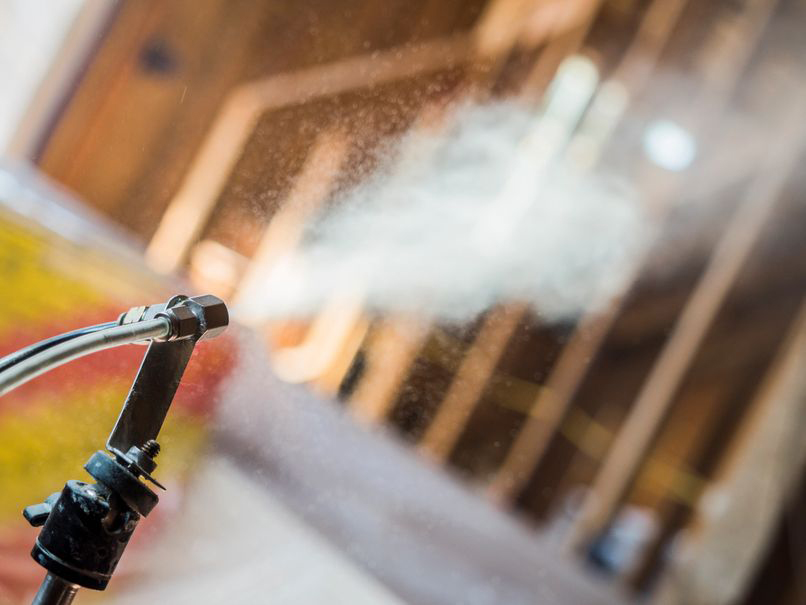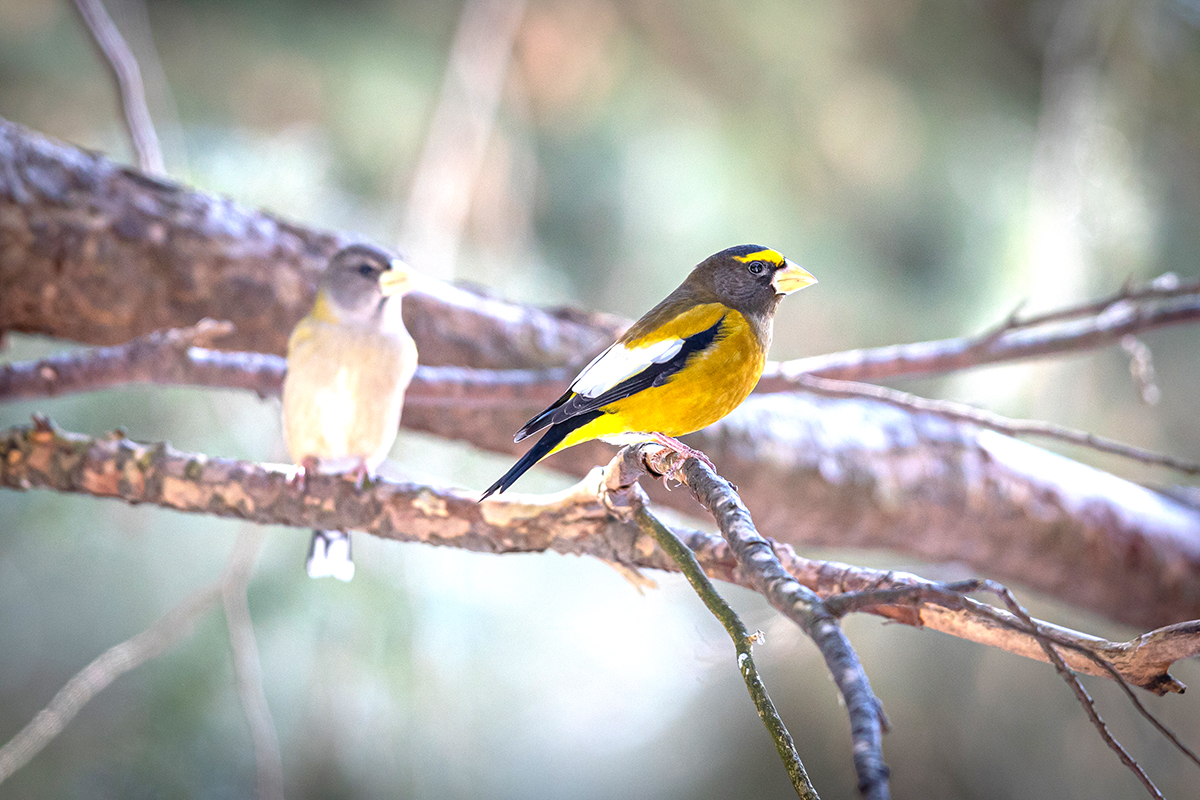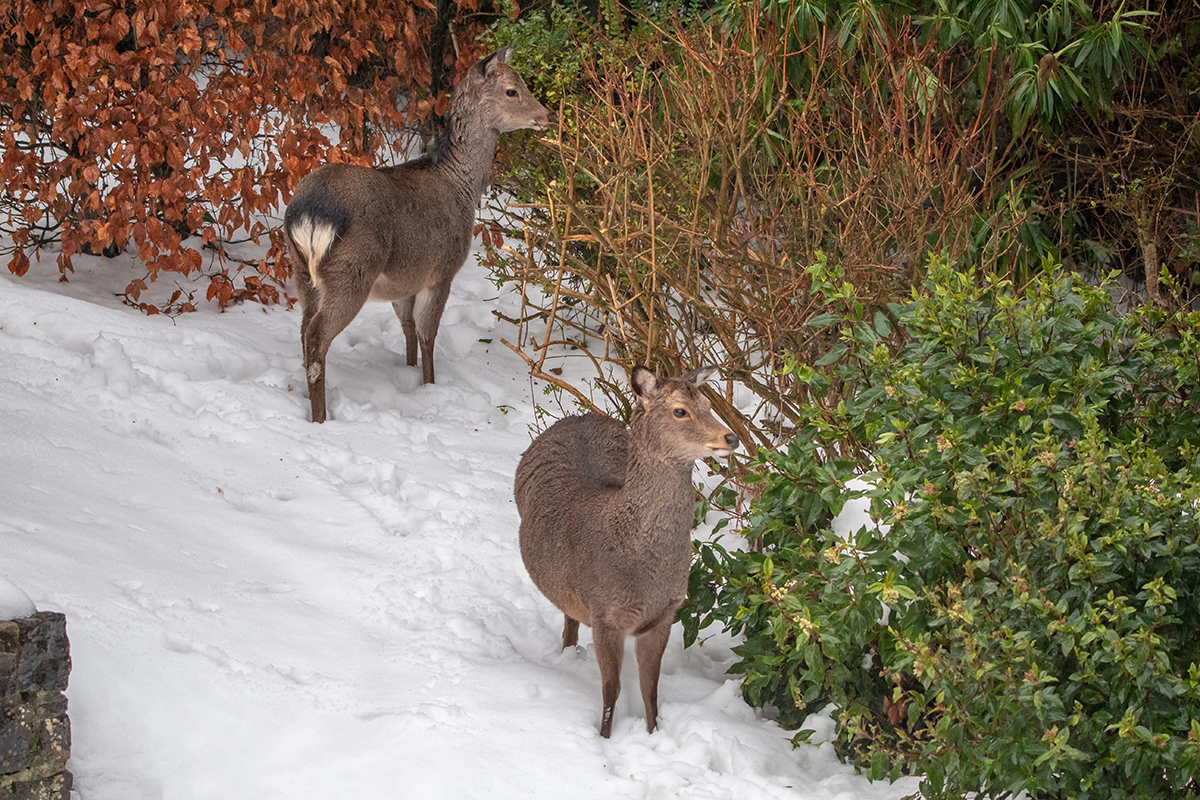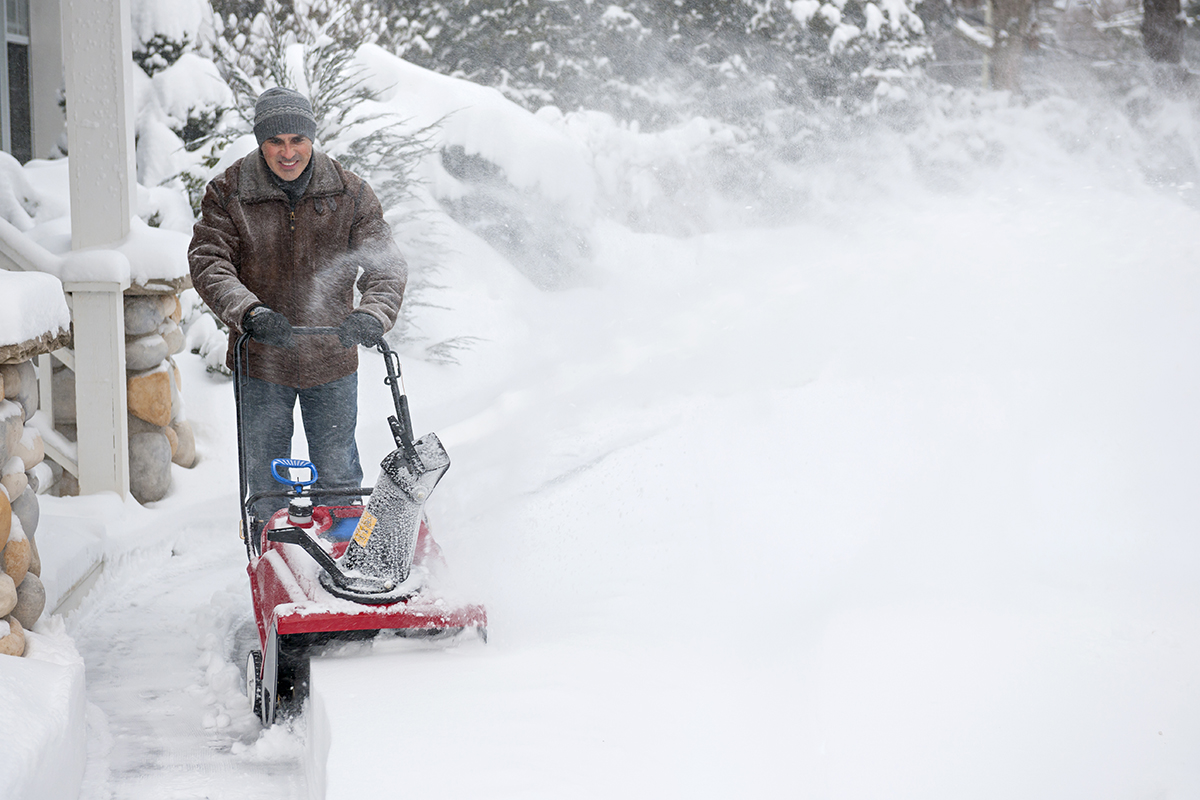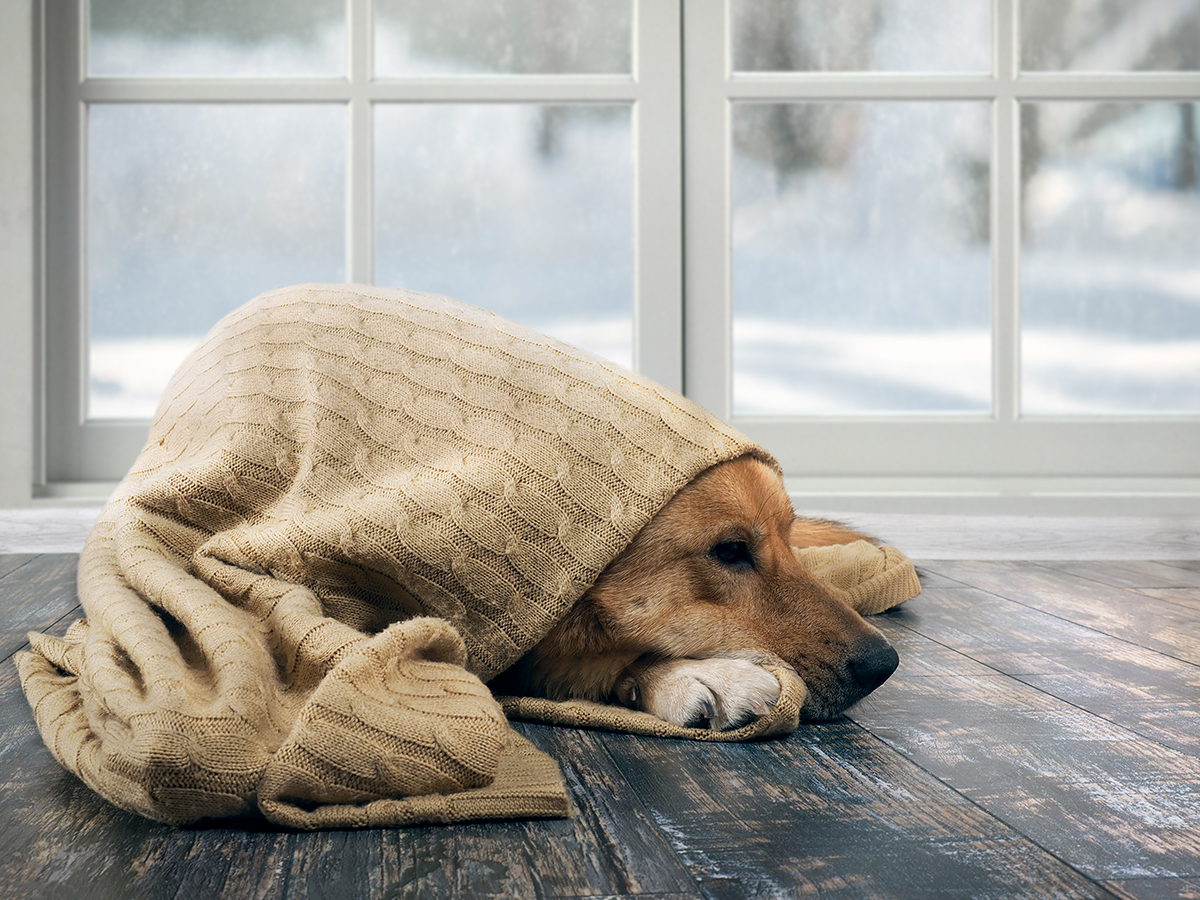WRITER | JULIE FORD
Nutritious food, warm clothing, fresh water, and a toasty abode are basic necessities to get through a Michigan winter for both humans and wildlife. For the nearly 40 species of birds that prefer a wintry backyard to a long flight for warmer weather, finding a yard with well-stocked feeders, open water, and areas of shelter is paradise.
When the first snowflake falls, juicy insects are a memory, berries have dwindled, and seeds from native plants are harder to find. Sourcing food and water, conserving energy, and watching for predators is stressful enough. Add below-freezing temperatures, snow, sleet, and wind, and it’s no wonder why feeders host throngs of winter birds.
For many birds, maintaining a body temperature around 105 degrees Fahrenheit in winter is a constant challenge. A cold bird appears very round and puffy, may stand on one foot keeping the other tucked or may sit over both feet. To keep dry, birds preen oil into their feathers from a special gland at the base of their tails. Methods of conserving energy include limiting singing and seeking shelter to rest or roost with a few pals. Above all, the key to staying warm is food.
Sara DePew-Bäby, the avian caretaker at Michigan State University’s Kellogg Bird Sanctuary in Augusta, says black-oil sunflower seeds are one of the best seeds for many species. The shell is easy to crack — helping birds conserve energy — and the seed meat has a high-fat content that birds need. “At the Sanctuary, we have black-oil seeds, thistle, and suet cakes,” says DePew-Bäby. “If I feel generous, I’ll add peanuts.” But she warns that only raw, shelled or unshelled peanuts should be offered – no salted nuts.
DePew-Bäby also recommends providing beef suet from the butcher or commercially made suet cakes for wire feeders. To discourage voracious and ill-mannered starlings that cannot hang upside down like woodpeckers, place a suet cake in its plastic container into a basic hanging wire suet feeder with the exposed suet facing the ground. The woodpeckers will enjoy the suet while the starlings just lose their grip and eventually give up. For variety, apple kabobs and dried fruit are also welcome treats.
Limit or avoid hard-shelled striped sunflower seeds and inexpensive mixes featuring cracked corn and millet that invite quarrels (aptly named) of sparrows to invade the feeders and send the “nicer” birds to another yard. Safflower seeds are another hard-shelled seed and may not be interesting to the masses. Finches prefer thistle, but they will also appreciate “no mess” mixes with a high ratio of shelled sunflower meats to millet. Winter birds will gladly consume seeds they don’t need to crack, and regularly consumed food means less chance of mold and bacteria.
“Clean the feeders if they’re dirty, seed is caking, or there are fecal droppings,” explains DePew-Bäby. “Use warm water and soap and let them air dry before refilling.” While there are myriad types of feeders, ones made of basic construction and solid materials tend to be easier to clean and maintain. This also holds true for heated birdbaths, hard plastic dishes with built-in heaters, or various sizes of heated dog bowls. Just like humans, birds must stay hydrated. Heated birdbaths and bowls are an easy way to maintain open water and should be cleaned and refilled every two to three days.
While she has never witnessed chickadees, bluebirds, titmice, or woodpeckers roosting in a birdhouse on a winter’s night, it is entirely possible – though not nearly as comfy as a roosting box. “A really good habit to have at the end of each season is cleaning out the birdhouses,” explains DePew-Bäby. She recommends removing all matter and giving the inside a light spray with 70 percent isopropyl alcohol. Placing a few cedar chips (hamster variety) in the cleaned birdhouse along with dried straw or grass might be enticing. Roosting boxes have built-in perches, fewer holes to help keep out the cold, and the entrance is lower to keep in the rising heat from one or more birds.
Evergreens and dense shrub thickets typically provide cover from predators and weather during the day and for roosting at night. Around the yard, messy piles of brush and pine branches are helpful cover if there are no lurking neighborhood cats. While a rotting tree might look unsightly, it may be lodging a banditry of chickadees.
The offering of food, water, and shelter helps countless backyard birds, and the payback is in the beauty and calm of observing their interesting behavior. There’s a deep sense of satisfaction in knowing that on the coldest of winter nights, there will be well-fed birdies in cozy covers all around the yard.


